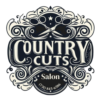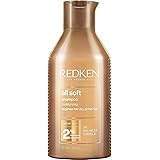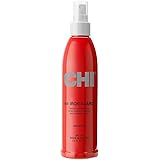Introduction to Body Image
Body image is a multifaceted concept that involves an individual’s perception of their physical appearance, encompassing how they see themselves and how they believe others perceive them. This self-assessment is influenced by various factors, including societal standards, cultural norms, and personal experiences. The significance of body image in our lives cannot be overstated, as it affects self-esteem, mental health, and overall quality of life.
Societal standards play a crucial role in shaping body image perceptions. Media portrayals often depict idealized versions of beauty, which can lead individuals to compare themselves unfavorably to these unrealistic benchmarks. For instance, advertisements, television shows, and social media platforms frequently highlight slim bodies, flawless skin, and perfect hair as the epitome of attractiveness. As a result, individuals may develop a skewed body image and feelings of inadequacy when they do not meet these standards. This dissonance can contribute to a range of negative outcomes, including anxiety, depression, and disordered eating behaviors.
Moreover, personal experiences also critically influence body image. Factors such as childhood experiences, peer relationships, and personal health challenges can profoundly shape an individual’s self-perception. Positive reinforcement from family and friends creates a healthy body image, while negative remarks or bullying can have lasting detrimental effects. Recognizing that body image is not solely dictated by societal expectations, but also by personal experiences, is essential for understanding its complexity.
In navigating the intricacies of body image, it is essential to foster a culture that values diversity and promotes positive self-image. Encouraging discussions around body positivity can empower individuals to develop healthier perceptions of themselves, moving beyond societal standards and focusing on self-acceptance and appreciation. Understanding the dynamics of body image is the first step toward overcoming negative perceptions and embracing individuality.
The Role of Hair in Body Image
Hair plays a pivotal role in shaping individual body image and self-perception, acting as a significant identifier of personal and cultural identity. From an early age, the styles, colors, and characteristics of hair often associate with various cultural practices and societal norms. In many cultures, hair is not just a physical attribute; it embodies beliefs and values that are passed down through generations. For instance, traditional hairstyles may symbolize cultural pride and historical significance, while contemporary styles can reflect personal expression and adaptability to modern trends.
Moreover, the way individuals perceive their hair can heavily influence their overall body image. For many, a desired hairstyle may serve as a source of confidence, while dissatisfaction with hair can lead to negative body image and self-esteem issues. The complex relationship between hair and body image can be observed through the prevalence of hair-related anxiety, where individuals become overly preoccupied with their hair’s appearance or texture. Such anxiety can impact interactions with others, as individuals may feel judged based on their hair.
Social media further amplifies the significance of hair in body image by exposing individuals to a diverse array of hairstyles and the unrealistic beauty standards often promoted within popular culture. Influencers and celebrities can set trends that some may feel pressured to follow, thus impacting personal identity. Consequently, the portrayal of ‘ideal’ hair can lead to dissatisfaction for those unable to achieve similar looks, exacerbating existing body image concerns.
In recognizing the influence of hair on body image, it is crucial to foster a sense of acceptance and appreciation for one’s own unique qualities. Challenging societal norms and understanding the cultural significance of hair can empower individuals to embrace their true selves, enhancing their overall sense of body positivity and well-being.
Cultivating a Positive Relationship with Hair
Developing a healthier relationship with hair is essential for fostering positive body image and self-acceptance. One effective strategy is to embrace natural textures. Hair comes in various types, from straight to curly, and each texture holds its own unique beauty. By appreciating and enhancing the natural characteristics of one’s hair rather than striving for a societal ideal, individuals can cultivate an empowered identity that is rooted in authenticity. Using products specifically designed for a particular hair type can help in celebrating its natural beauty, further reinforcing a positive perception.
Experimenting with different hairstyles is another powerful approach. Change can be invigorating, and trying out new looks allows for self-expression and creativity. Whether it’s braiding, curling, or using accessories, the possibilities are endless. Engaging in this playful exploration not only revitalizes one’s appearance but also serves as a reminder that hair can be a dynamic aspect of personal identity. Embracing variety enables individuals to feel less constrained by conventional beauty norms, promoting a more open-minded perspective on hair.
Furthermore, understanding the historical and cultural context of hair is crucial in reshaping one’s relationship with it. Hair has traditionally held significant meanings across diverse cultures, whether as a symbol of heritage, power, or individuality. Recognizing the cultural stories woven into different hairstyles can foster appreciation and respect, bridging the gap between beauty expectations and personal authenticity. Engaging in conversations about the significance of hair and its role in identity can elevate the notion of beauty from a singular viewpoint to a more inclusive narrative.
By implementing these strategies—embracing natural textures, exploring different styles, and understanding the cultural importance of hair—individuals can nurture a positive relationship with their hair, enriching their overall body image and self-esteem.
Understanding Beauty Standards
In contemporary society, the perception of beauty is largely shaped by a multitude of external influences, including media portrayals, social media platforms, and cultural trends. These modern beauty standards often set unrealistic expectations, leading individuals to grapple with their own body image. The idealized images frequently presented in advertisements, television shows, and popular films create a narrow definition of what is considered beautiful. Such portrayals typically emphasize specific physical traits, including slimness, flawless skin, and particular facial features, which can significantly impact how individuals perceive themselves.
The pressure to conform to these beauty standards is pervasive, permeating daily life and often leading to negative body image issues. The portrayal of beauty in the media tends to focus heavily on youth and perfection, which can be disheartening for many individuals who do not fit these criteria. As a result, feelings of inadequacy, low self-esteem, and dissatisfaction with one’s own body may arise. This phenomenon is not restricted to one demographic; people of all ages, genders, and ethnicities can feel the weight of societal expectations regarding appearance.
Furthermore, social media exacerbates these issues, amplifying the visibility of curated lifestyles and idealized bodies. Users are continuously exposed to filtered images and video content that highlight unattainable beauty standards, often leading to comparison and self-doubt. The algorithms that govern these platforms tend to favor content that aligns with these ideals, perpetuating a cycle of pressure and conformity.
In conclusion, understanding the impact of contemporary beauty standards is pivotal for individuals grappling with body image issues. Recognition of the media’s role in shaping perceptions can foster resilience and encourage a more inclusive view of beauty that embraces diverse body types and characteristics. A thoughtful examination of these influences is essential for promoting positive body image and self-acceptance.
The Impact of Social Media on Body Image
In recent years, social media has profoundly influenced how individuals perceive their bodies and self-image. Platforms such as Instagram, Facebook, and Snapchat are filled with images that often showcase idealized versions of beauty—these images are frequently filtered, edited, or enhanced, leading to unrealistic standards. As a result, the tendency to compare oneself to these curated representations can have detrimental effects on self-esteem.
Research indicates that exposure to idealized images on social media can increase body dissatisfaction, particularly among adolescents and young adults. The constant scroll through seemingly perfect photos can create a distorted view of what is considered normal or attractive. This distorted perception can lead to feelings of inadequacy, anxiety, and depression, particularly when individuals measure their own appearance against these often unattainable ideals.
Furthermore, the prevalence of likes and comments can amplify this issue, as users often derive validation from their online interactions. When an individual receives positive feedback on images that conform to societal beauty standards, it may further entrench the belief that their worth is tied to appearance. Conversely, lack of engagement or negative comments can exacerbate feelings of low self-worth and perpetuate a negative body image.
Moreover, the regular exposure to fitness influencers and ‘body positivity’ movements can create a dichotomy where individuals feel pressured to either conform to a ‘fit’ image or strive for a ‘realistic’ image that still falls within socially accepted parameters. This pressure can lead to an ongoing cycle of comparison, ultimately harming mental health. It is crucial to recognize these patterns and cultivate a more positive relationship with body image and self-acceptance, encouraging users to engage with social media in a more mindful manner.
Mental Health and Body Image
The relationship between body image and mental health is a complex and multi-faceted issue that has garnered significant attention in recent years. Negative body image can lead to a host of psychological concerns, including anxiety and depression. Various studies have indicated that individuals with poor body image are at a greater risk for developing mental health disorders. It is crucial to understand this connection to promote awareness and encourage those affected to seek help.
A study published in the Journal of Adolescent Health found that adolescents with negative body image experiences were significantly more likely to experience symptoms of depression and anxiety. The research highlights that this is not merely a vanity issue; rather, it reflects deeper concerns that affect an individual’s self-esteem and overall mental well-being. This association often manifests through behaviors such as social withdrawal or avoidance of activities, further exacerbating feelings of isolation and hopelessness.
Personal testimonies also shed light on the emotional turmoil tied to body image perceptions. For example, one individual reported feeling persistently anxious about their appearance, leading to avoidance of social situations and ultimately hindering personal relationships. In another case, a young adult shared their battle with depression, attributing the onset to a continuous negative perception of their body, spurred on by unrealistic societal standards. These narratives underscore the emotional weight that body image issues can impose on mental health.
To counteract the detrimental effects of negative body image, it is vital for individuals to engage in open discussions about these issues and to seek professional support when necessary. Therapies addressing body image concerns—such as cognitive behavioural therapy (CBT)—can be effective in promoting healthier perceptions and enhancing mental health outcomes. The implications of poor body image are profound, affecting not only individual mental health but also broader societal issues, emphasizing the need for ongoing dialogue and research in this critical area.
Building Self-Esteem through Hair Care
Hair care plays a significant role in enhancing one’s self-esteem and body image. Many individuals often associate their hair with their overall appearance, which can significantly influence their confidence levels. Thus, adopting a proper hair care routine can contribute positively to how one feels about oneself. It is crucial to understand that personal grooming can impact not only how others perceive us but more importantly, how we perceive ourselves.
To create a personalized hair care routine, it is important to first assess your hair type and specific needs. Different hair types—whether straight, wavy, curly, or coily—require distinct care techniques and products. For instance, individuals with curly hair may benefit from hydrating shampoos and conditioners designed to maintain moisture levels, while those with straight hair might prioritize volumizing products to achieve desired fullness. Understanding your hair type will allow you to invest in products that truly cater to your specific needs, enhancing both the health and look of your hair.
Moreover, incorporating regular hair treatments, such as deep conditioning masks, can provide significant benefits. These treatments can replenish lost moisture, reduce damage, and improve overall texture, contributing to positive changes in how one feels about their appearance. Additionally, experimenting with different hairstyles can also help in building self-esteem. Finding a style that complements your facial features can make an individual feel more confident and empowered.
Finally, consistency is key. Establish a routine that includes regular washing, conditioning, and styling to keep your hair looking its best. Allocate a few moments each week for hair care activities; this time spent on self-care not only enhances one’s physical appearance but can also foster a greater sense of self-appreciation and well-being.
Overcoming Negative Body Image Issues
Negative body image issues can significantly impact mental health and self-esteem. Addressing these concerns requires an intentional approach. One effective method is cognitive reframing, which involves changing the way you perceive and interpret thoughts related to your body. For instance, if you often think negatively about your appearance, challenge those thoughts by asking yourself if they are based on facts or subjective feelings. This cognitive shift can lead to a more balanced view of your body, recognizing its unique qualities rather than just its perceived flaws.
Incorporating positive affirmations into your daily routine is another powerful strategy. Affirmations are short, positive statements that reinforce self-worth and acceptance. By regularly repeating phrases such as “I am worthy of love and respect” or “My body is strong and capable,” individuals can gradually shift their mindset toward a healthier body image. Writing these affirmations down and placing them in visible areas, such as a mirror or workspace, serves as a constant reminder of one’s intrinsic value.
Seeking professional help is also vital for those struggling with persistent negative body image issues. Therapists and counselors specializing in body image or self-esteem can provide tailored guidance. Cognitive-behavioral therapy (CBT), in particular, has proven effective in addressing distorted body perceptions and developing healthier coping mechanisms. Sharing feelings with supportive friends or joining self-help groups can foster a sense of community, offering both understanding and encouragement throughout the healing journey.
In essence, overcoming negative body image issues is a multifaceted process that requires dedication and self-compassion. By employing cognitive reframing, adopting positive affirmations, and seeking professional support when necessary, individuals can cultivate a more positive relationship with their bodies and ultimately enhance their overall well-being.
The Importance of Community Support
Community support plays a crucial role in fostering positive body image. A supportive environment can significantly help individuals cope with the negative perceptions they may have about their appearance. When surrounded by an encouraging group, individuals are often more likely to embrace their unique characteristics and cultivate self-acceptance. This is particularly important in a society that frequently emphasizes unrealistic beauty standards, which can lead to issues related to body image.
Engaging with a community that promotes body positivity offers numerous benefits. It provides a safe space for members to share their experiences and feelings, which facilitates open conversations about body image concerns. This sharing can alleviate feelings of isolation and shame, allowing individuals to realize they are not alone in their struggles. Whether through local support groups or online forums, finding a community can empower individuals to challenge negative thoughts and beliefs about their bodies.
There are several organizations dedicated to promoting body positivity and mental wellness. For example, the National Eating Disorders Association (NEDA) offers resources and support for those struggling with body image issues, along with educational materials to help individuals understand and combat unhealthy societal pressures. Similarly, groups such as Body Positive provide workshops and events focused on embracing diverse body types and developing a healthy self-image.
Additionally, social media can be a powerful tool for connecting with supportive communities. Platforms such as Instagram and Facebook host various body-positive movements and hashtags that promote acceptance and self-love. Following accounts that celebrate body diversity and mental health can provide daily inspiration and affirmation, reinforcing the notion that beauty comes in all shapes and sizes. By tapping into these community resources, individuals can strengthen their sense of belonging and, eventually, develop a more positive body image.
Personal Stories of Transformation
Many individuals have embarked on their journeys toward embracing their hair and body, resulting in profound transformations both internally and externally. One such powerful narrative is that of Emma, who grappled with severe body image issues stemming from her naturally curly hair. Growing up in a society that favored straight locks, Emma experienced relentless teasing from peers that left her feeling unworthy and ashamed of her appearance. However, her journey took a significant turn when she attended a women’s empowerment workshop that celebrated diverse beauty. Inspired by the stories she heard, she decided to embrace her curls rather than hide them. Through this acceptance, Emma not only transformed her hairstyle but also revamped her outlook on life, urging others to acknowledge their unique traits.
Similarly, David’s story highlights the impact of societal expectations on men’s body image. For years, he felt pressured to achieve a muscular physique, often resorting to extreme diets and exercise regimens that took a toll on his mental health. After hitting rock bottom, David sought therapy, where he learned to appreciate his body for its capabilities rather than its appearance. This led him to foster a healthier relationship with food and exercise, focusing on physical activity that brought him joy. David now advocates for body positivity and encourages men to celebrate their bodies, regardless of societal standards.
These narratives resonate with countless individuals who struggle with body image concerns, particularly relating to their hair and physiques. The journeys of Emma and David serve as beacons of hope, reminding us that transformation is possible when we challenge societal norms and embrace our true selves. Their experiences illustrate that overcoming negative body image issues involves not just external changes, but a deep inner shift towards self-acceptance and authenticity.
Embracing Diversity in Hair & Body Types
In contemporary society, the significance of embracing diversity in hair and body types cannot be overstated. We encounter an array of hair textures and body shapes that reflect unique heritages, cultures, and personal identities. This diversity is an integral part of our collective human experience, and acknowledging it fosters a deeper understanding and appreciation for one another.
Media representation plays a pivotal role in shaping perceptions of beauty. Historically, many platforms have favored a narrow definition of attractiveness, often leading to feelings of inadequacy among those who do not conform to these standards. However, a shift towards inclusivity is gaining momentum, with various brands and content creators actively promoting a wider range of hair types and body shapes. This change conveys a more realistic representation of everyday individuals, challenging the conventional beauty norms that have dominated for decades. Inclusive advertising and media portrayals not only help in broadening societal views but also empower individuals to celebrate their unique features.
The celebration of different hair types, whether curly, straight, coily, or wavy, alongside diverse body shapes, encourages individuals to embrace their authentic selves. By highlighting various beauty standards, we create an environment where everyone feels seen and valued, regardless of their hair or body type. This inclusivity nurtures self-acceptance and reduces the likelihood of negative body image issues, fostering emotional wellbeing and enhancing self-esteem.
Moreover, educational initiatives emphasizing the beauty of diversity in hair and body types can illuminate the rich cultural histories tied to different styles and shapes. Sharing stories and experiences surrounding hair and body image cultivates empathy and understanding, promoting a society that respects and honors individuality. In this journey towards inclusivity, everyone has a role to play, from influencers to everyday individuals, in creating a more accepting world.
Cultural Perspectives on Hair and Beauty
Throughout history, hair and beauty standards have been shaped significantly by cultural influences. Different cultures possess unique perceptions regarding hair, often intertwining it with notions of identity, dignity, and beauty. For instance, in many Western societies, straight, sleek hair has long been favored, reinforcing a standard of beauty that often excludes those with naturally curly or textured hair. This has contributed to individuals across various ethnic backgrounds feeling pressured to conform to these prevailing aesthetics, often leading to negative body image issues.
Conversely, numerous cultures emphasize the beauty of ethnic hair textures and styles in ways that celebrate diversity. For instance, the Afro hairstyle is a powerful symbol of pride within African and African Diaspora communities, reflecting a deep connection to heritage and identity. Similarly, in some South Asian cultures, long, thick hair is often perceived as a sign of femininity and beauty, leading women to invest significantly in hair care rituals to maintain this ideal. Such cultural perspectives highlight the importance of hair as more than a mere personal attribute; it serves as a canvas for cultural expression and individuality.
Moreover, the growing recognition of diverse beauty standards is fostering a broader cultural shift. Movements advocating for the acceptance of all hair types are gaining visibility, encouraging individuals to embrace their natural textures. Social media platforms are amplifying these narratives, allowing voices that challenge conventional beauty norms to gain prominence. As societies continue to evolve, it is imperative to appreciate the rich tapestry of cultural influences on hair and beauty. By understanding these varying perspectives, individuals can cultivate a more inclusive and compassionate approach towards body image and self-acceptance, fostering an environment where everyone feels valued and celebrated for their uniqueness.
Self-Care Practices for Enhancing Body Image
Integrating self-care practices into daily routines is crucial for improving body image and fostering a positive perception of oneself. One effective approach is mindfulness, which encourages individuals to be present in the moment and to cultivate awareness of their thoughts and feelings without judgment. Mindfulness practices, such as meditation, can help individuals detach from negative self-talk related to their body image. By focusing on the breath and allowing thoughts to flow without engaging with them, one can reduce the emotional impact of negative body image issues.
In addition to mindfulness, establishing personalized self-care rituals can significantly enhance one’s body image. Engaging in activities that promote physical well-being, such as regular exercise, not only improves physical health but also boosts self-esteem. Whether it is yoga, dancing, or taking a daily walk, finding a form of movement that one enjoys can transform the relationship with their body, making it a source of joy rather than criticism. Similarly, setting aside time for self-care practices like skincare routines or pampering sessions allows individuals to connect with their physical selves positively.
Another vital aspect of self-care is fostering a supportive social network. Surrounding oneself with positive influences and engaging in open discussions about body image can help counteract negative societal standards. Support groups or online communities that focus on body positivity can be beneficial in sharing experiences and strategies for overcoming body image issues. Ultimately, incorporating these self-care practices leads to a holistic improvement in body image. By embracing mindfulness, personalized routines, and supportive communities, individuals can develop a healthier, more affirmative relationship with their bodies.
Professional Guidance: When to Seek Help
Body image issues can significantly affect an individual’s emotional and psychological well-being. Recognizing the signs that indicate a need for professional guidance is crucial for fostering a healthier perspective. Common indicators include persistent negative thoughts about one’s appearance, avoidance of social situations due to body image concerns, or a heightened preoccupation with weight, shape, and size. Additionally, if individuals find themselves engaging in unhealthy behaviors such as extreme dieting, excessive exercising, or self-harm, it might be time to seek assistance.
Several types of professionals specialize in addressing body image issues. Psychologists or licensed therapists can provide therapeutic interventions tailored to improve self-esteem and challenge negative thought patterns. Cognitive-behavioral therapy (CBT) is particularly effective in altering harmful beliefs about body image, helping clients develop healthier perspectives.
Nutritional counselors and dietitians also play a vital role in fostering a balanced relationship with food and body image. By providing education on nutrition and discussing lifestyle choices, these professionals can help individuals understand the importance of nourishment over appearance. Furthermore, support groups led by qualified facilitators offer a safe environment for individuals to share their experiences and learn from others facing similar struggles.
In certain cases, family doctors can be an initial point of contact. They can evaluate the physical health implications of body image issues and refer patients to appropriate specialists. The interconnected nature of mental and physical health cannot be overlooked, and early intervention can help prevent more severe conditions from developing.
Ultimately, reaching out for help is a sign of strength. Seeking guidance from qualified professionals ensures not only a better understanding of one’s body image issues but also provides necessary tools for achieving a healthier, more positive self-image.
Setting Realistic Expectations
In the journey toward fostering a positive body image, it is essential to set realistic expectations about beauty and self-appearance. Many individuals, influenced by societal standards and media portrayals, often develop unattainable ideals. The consequences can lead to dissatisfaction and a negative body image, particularly when individuals compare themselves to enhanced or edited representations of beauty that dominate various platforms. This pervasive comparison culture necessitates the establishment of personal, realistic benchmarks that acknowledge individual diversity and imperfection.
One significant step in shifting perspectives is the adoption of self-compassion. Embracing self-compassion encourages individuals to treat themselves with kindness rather than criticism. When individuals recognize that everyone has their own unique traits, strengths, and flaws, it becomes easier to form a balanced view of oneself. Self-compassion involves understanding that internal struggles are part of the human experience, allowing for a greater acceptance of one’s body image flaws without harsh judgment. Incorporating positive affirmations and practicing mindfulness can also be effective strategies in fostering self-compassion.
Moreover, it is vital to understand that bodies change over time, and this natural evolution should be accepted rather than resisted. Setting expectations aligned with personal well-being—rather than the unattainable goals set by society—promotes a healthier relationship with one’s body. Engage in physical activities that bring joy rather than those aimed solely at altering appearance. Focus on health, energy, and well-being as indicators of beauty, rather than weight or specific measurements. Ultimately, recognizing and appreciating individuality allows one to understand that beauty exists in diverse forms, leading to a more profound sense of self-acceptance and positive body image.
The Role of Education in Body Image Awareness
Education plays a pivotal role in shaping perceptions of body image and promoting body positivity. With the increasing prevalence of negative body image issues, particularly among young individuals, educational programs and initiatives have become essential in fostering a healthier understanding of self-esteem and body awareness. Schools and community organizations are implementing various strategies to combat the negative effects of societal pressure regarding physical appearance.
One significant approach in enhancing body image awareness is through comprehensive health education curricula. These programs not only address physical health but also include discussions about mental health, encouraging students to appreciate diversity in body types and to cultivate a positive self-image. Moreover, incorporating topics related to media literacy helps individuals critically engage with the often unrealistic portrayals of body standards in advertising and popular culture.
Various initiatives, such as the Body Positive movement and partnerships with non-profit organizations, have gained traction in educational settings. Workshops and seminars designed to promote self-acceptance and resilience are being organized, allowing individuals to share experiences and foster a supportive atmosphere. These initiatives emphasize the importance of appreciating one’s unique traits rather than conforming to limiting societal norms.
Additionally, integrating body positive messages into extracurricular activities, such as sports and arts programs, promotes an inclusive environment where all body types are celebrated. This holistic approach encourages individuals to express themselves freely and confidently, thereby reducing body image-related anxiety. By prioritizing education on body image issues, we can nurture a generation that is equipped with the tools to counteract negativity and embrace self-love, ultimately leading to healthier lifestyles and improved mental well-being.
The Link Between Fashion and Body Image
Fashion plays a significant role in shaping how individuals perceive their bodies. The choices we make in our attire not only reflect personal style but also have broader implications for body image. From high-end fashion runways to streetwear, clothing can enhance self-esteem or contribute to negative body perceptions. The fashion industry traditionally promotes an idealized body type, influencing societal standards that can negatively impact those who do not fit this narrow mold. This can lead to feelings of inadequacy and diminished self-worth among individuals of various sizes and shapes.
In recent years, there has been a gradual shift in the fashion landscape toward inclusivity and diversity. More brands are beginning to recognize the importance of representing a wider range of body sizes and shapes in their campaigns and collections. This positive change allows individuals to see themselves reflected in the fashion world, fostering a healthier body image and encouraging self-acceptance. The integration of diverse body types in fashion shows and marketing materials promotes a more inclusive narrative that challenges the notion of a singular ideal body type.
Moreover, the rise of social media platforms has empowered individuals to embrace their unique body shapes and share their personal fashion choices. This democratization of fashion encourages the idea that style should be accessible to everyone, regardless of size. Influencers showcasing their outfits can inspire body positivity and challenge stereotypes, as they present fashion as a form of self-expression rather than a means to conform to societal expectations.
As the dialogue surrounding body image continues to evolve, it is crucial for the fashion industry to take responsibility for the narratives it perpetuates. By promoting diverse body representations and encouraging a broader acceptance of all forms, the industry can play a vital role in fostering a positive body image, ultimately benefiting society as a whole.
Challenges in Body Image: A Collective Experience
The perception of body image is a multifaceted aspect of human experience, influenced by a myriad of factors such as culture, media, and personal experiences. Individuals often grapple with various challenges related to their body image, leading to a shared narrative that can both isolate and connect them to others facing similar struggles. A common challenge is the pervasive influence of unrealistic beauty standards perpetuated by social media and popular culture. Many individuals find themselves comparing their looks to idealized images that are heavily edited and curated, resulting in feelings of inadequacy and low self-esteem.
Additionally, societal pressures can exacerbate body image issues. Cultural norms dictate what is considered attractive or acceptable, leaving many to feel alienated if they do not conform to these ideals. These pressures can particularly affect groups such as teenagers, who are in a formative stage of self-identity development. The challenges may include feelings of self-doubt, dissatisfaction with physical appearance, and even disordered eating patterns as individuals strive to attain an often unachievable standard.
Moreover, these challenges are not faced in isolation; rather, they can foster a sense of community among those who share similar experiences. Support networks, whether through friends, family, or online communities, can play a crucial role in helping individuals navigate their struggles. By discussing challenges openly, individuals can find solidarity and mutual support, reinforcing the idea that they are not alone in their experiences. This sense of community can be empowering, encouraging individuals to embrace their unique bodies and promote a healthier perspective regarding body image.
Moving Forward: A Call to Action
The journey toward improving body image and mental health requires collective effort and individual commitment. It is essential for individuals to recognize that beauty transcends conventional standards portrayed in media. Embracing an inclusive understanding of beauty can be a crucial step in fostering a positive self-image. Advocating for diversity in representation—across hair textures, body shapes, and skin tones—encourages people to appreciate their unique qualities and diminish the pervasive negativity linked with restrictive beauty ideals.
As a first step, individuals should seek to cultivate self-acceptance and engage in positive self-talk. This conscious effort supports the development of a healthy body image. Connecting with supportive communities, whether through social media platforms or local groups, offers a space for sharing experiences and encouragement. Surrounding oneself with positivity can reinforce self-worth and challenge the narratives that dictate one’s sense of beauty.
Additionally, it is important to become critical consumers of media. By advocating for content that celebrates all forms of beauty, individuals can influence the conversation surrounding body image. This involves supporting brands and initiatives that prioritize authenticity over unattainable perfection. Participating in campaigns that promote body positivity also contributes to a larger movement aimed at dismantling harmful stereotypes.
Moreover, taking proactive steps toward mental health, such as seeking professional help or practicing mindfulness, can significantly impact one’s perception of themselves. Remember, body image issues can be complex and require attention and care. By focusing on nurturing mental well-being, individuals can build resilience against societal pressures that undermine their self-esteem.
In conclusion, embracing an inclusive understanding of beauty and advocating for one another are fundamental in the quest to overcome negative body image issues. Every effort counts, no matter how small, and together, we can foster an environment where every individual feels valued and beautiful in their own skin.
Resources and Further Reading
For individuals seeking assistance and additional insights regarding body image issues, mental health, and hair care, a variety of resources are available. These books, websites, and support groups can provide valuable information and support in overcoming negative body image and fostering a healthier self-perception.
One highly regarded book is “The Body Keeps the Score” by Bessel van der Kolk. This insightful work explores the connection between trauma and body image, offering strategies for emotional healing. Another excellent option is “More Than a Body” by Lexie Kite and Lindsay Kite, which discusses the societal pressures surrounding appearance and how to achieve a positive body image.
Websites such as the National Eating Disorders Association (NEDA) offer comprehensive resources, including articles, forums, and links to support services. The American Psychological Association (APA) website also contains numerous articles on body image and mental health, providing a scientific approach to understanding these issues.
Support groups can be immensely beneficial for anyone grappling with body image concerns. The Recovery Warriors community provides an online platform for individuals to connect and share their experiences, offering both support and inspiration. Additionally, local therapy groups often exist within communities, where individuals can engage in discussions and build support networks.
Furthermore, online platforms like Instagram emphasize body positivity, with accounts dedicated to promoting diverse representations of beauty. Participating in these communities can inspire individuals to embrace their unique attributes.
As seeking help can be a vital step toward improved self-image, exploring the aforementioned resources can provide necessary support. By actively engaging with these tools, individuals can better understand their feelings and work toward fostering a positive body image and mental health.






